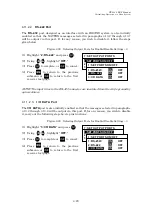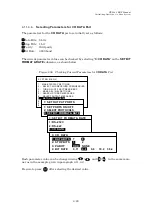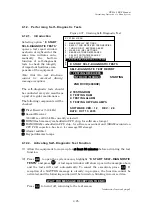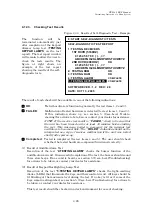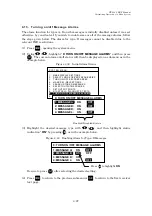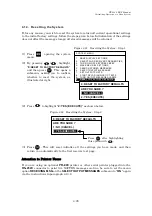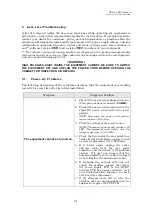
NT-2000 REF Manual
User-Level Troubleshooting
5-3
5.2. No
Message
Reception
–
2/3
Symptom
Suggested Solution
No messages can be received in the
daytime.
No NAVTEX messages can be received
on 518 kHz or 490 kHz during daytime
hours despite appropriate station/
message type selection settings.
1. Check if you are located within the service
area covered by the ground wave of the
desired station. The area is normally 200
to 400 nautical miles from each station
during daytime hours. At night, NAVTEX
signals ( 518 / 490 kHz) can travel
distances in excess of 1000 nautical miles
depending on the season and ionospheric
conditions. Nighttime signal propagation
changes greatly with the season.
2. Check the broadcast schedule of the
desired station. Each station usually
transmits for 5 to 10 minutes at intervals
of 4 hours
. Currently transmitting
stations may be outside the coverage area.
No messages can be received even
during a broadcasting time and
while in the service area.
No NAVTEX messages can be received
regardless of being in the service area of
a currently transmitting station and of
appropriate message/station selection
settings.
1. Check if the antenna cable is correctly
plugged into the appropriate rear apron
BNC connector receptacle.
2. Check if the connector (BNC) plug is
properly installed onto the cable.
Check also the coupling connectors, if
used for cable extension.
3. Check by replacing the active antenna
.
The antenna preamplifier unit may have
been destroyed by static discharges.
If a correct replacement is not available,
run approx. 5 meters of insulated wire
from the BNC connector’s center
conductor as a temporary long wire
antenna, and place it as high as possible
from the ground level.
< WARNING >
DO NOT SHORT THE OTHER END OF
THE WIRE ANTENNA TO GROUND, OR
DAMAGE TO THE UNIT’S POWER
SUPPLY WILL RESULT
.
4. If replacing the antenna still does not
solve the problem, check the voltage at the
center conductor of each antenna
connector. It should be 8V+ on the 490 and
518 kHz connectors, and 12V+ on the
4209.5 kHz connector. If no voltage is
present or it is extremely low, ask your
dealer/qualified engineer to check the
wiring to/from the power supply PCB first
and to replace the PCB, if necessary.
5. If all attempts above fail to correct the
problem, ask your dealer/qualified
engineer to check the related connections
to/from the CPU PCB first and to replace
the PCB, if necessary.
(
continued on next page
)




